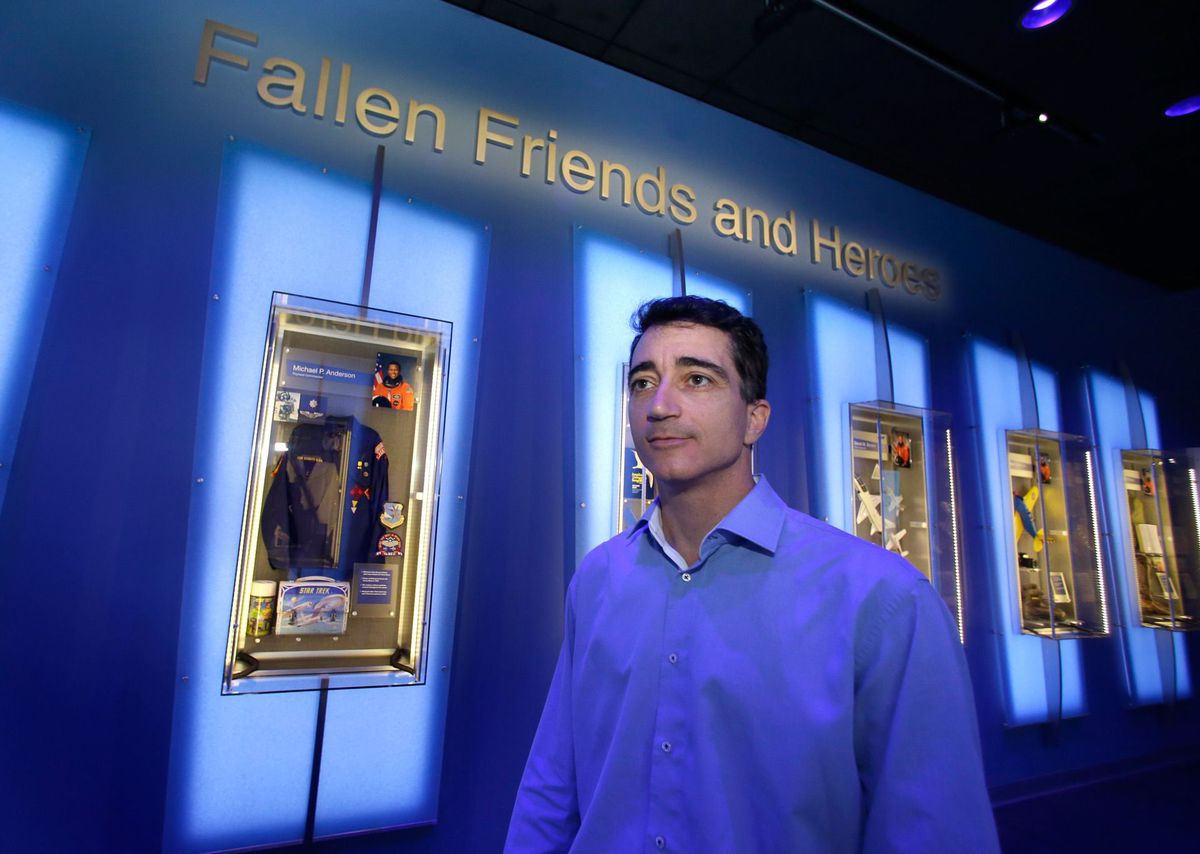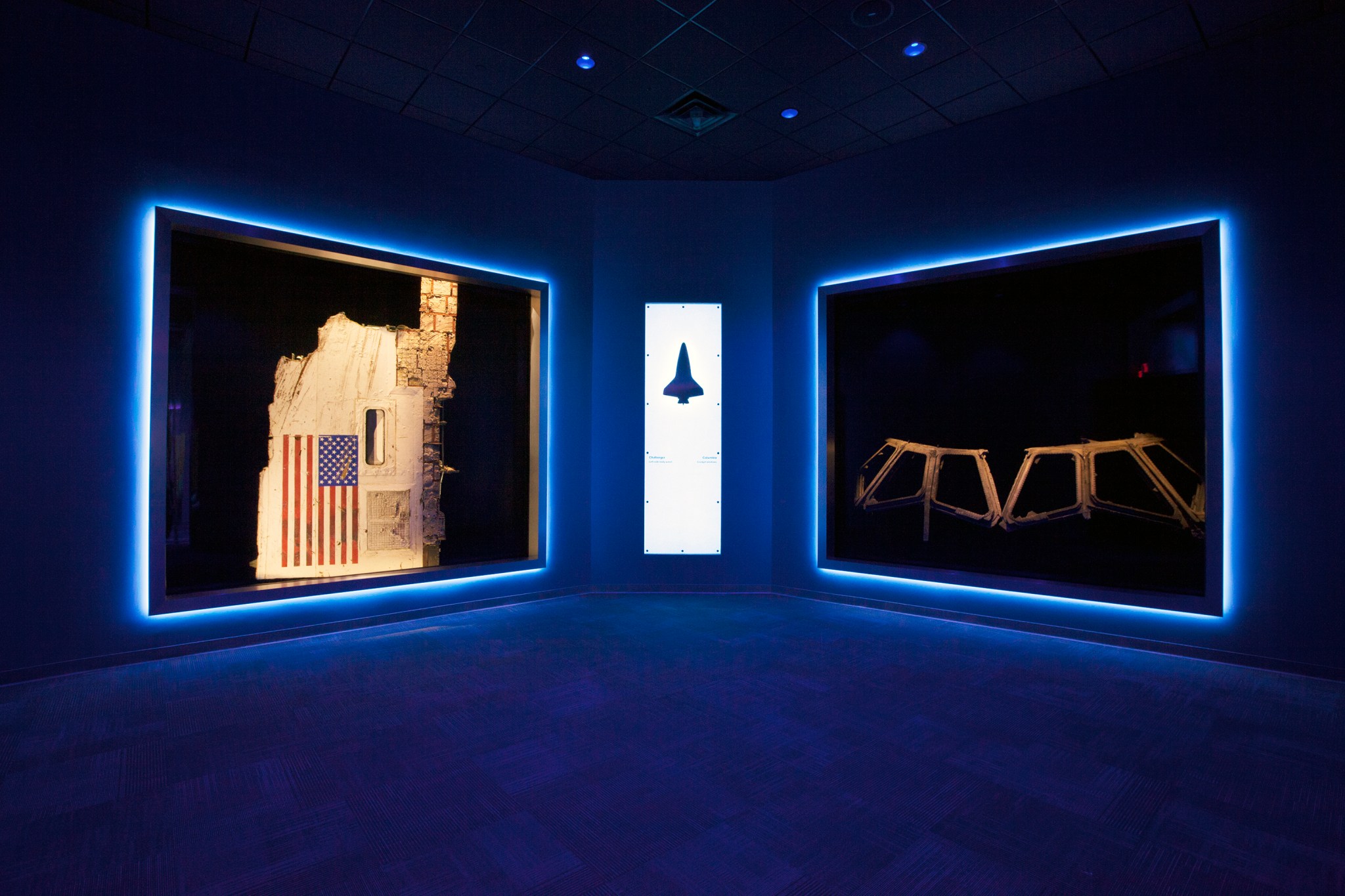Every day Michael Ciannilli walks among the more than 84,000 artifacts of the Space Shuttle Columbia. Some are very small and delicate. Bits of paper and metal. Some occupy a more substantial space. The air lock. The nose landing gear. The main engines.
But the size of those artifacts doesn’t matter to Mr. Ciannilli. What matters is the weight of the message they carry. It’s what brought him to the job of curator and steward of the Columbia legacy.
The former NASA test director for shuttle launch and landing operations was part of the recovery efforts in 2003, when Columbia was lost during its reentry. “Once the forensic studies were wrapped up, a decision had to be made on the best path forward,” said Mr. Ciannilli. “Some folks came up with the idea to make these artifacts available for use as a powerful teaching tool for the future.”
That’s when the Columbia Preservation Office came to be. People began coming to KSC to research the artifacts, which are housed in a 7,000-square-foot room in Kennedy Space Center’s Vehicle Assembly Building. “An apt location,” said Mr. Ciannilli, “since that’s where Columbia’s story began.” Artifacts were also sent to institutions for study, shared with academia, and used in the classroom.
In addition to his regular duties at NASA, Mr. Ciannilli began working at the office part time in 2006 facilitating a small number of tours and answering loan requests. A decade later, he has taken on the work of spreading Columbia’s message full time. “After years of bringing people through the room and seeing the impact the Columbia story and its crew had on our guests, I became more convinced that Columbia is a wonderful resource to affect hearts and minds and change them for the better,” he said.
So in 2016, he pushed forward a new concept, the Apollo Challenger Columbia Lessons Learned Program (ACCLLP). “As time moves on, connections to past events recede and lessons are no longer as effective as they could be to keep us from repeating mistakes.” The ACCLLP aims to keep those lessons front and center, Mr. Ciannilli said.
The ACCLLP effort is multifaceted: Getting the word out to a broader community about Columbia and the lessons it has to teach; reinvigorating the tour, transforming it from a visually-based display of artifacts to a storytelling experience that generates discussion; and placing a deeper focus on the lessons learned and their applications to the future of space travel.
To date, he’s conducted four of what he calls “lesson learned” events, part of which include bringing in key players in historical events and having them share their stories. “It’s a riveting experience,” he said. “You won’t see PowerPoint charts at these events.”
The room visitors see is laid out in a timeline of sorts that helps tell the Columbia story. It starts with the recovery operation and moves into reconstruction, the investigation and the Columbia Accident Investigation Board report.
“The displays and information are set up to facilitate discussions on specific topics – the airlock where crew worked every day, the items the crew interfaced with all the time. Pieces are chosen based on the story they can tell. We go through the cause of accident and show the lessons learned every step of the way,” he said.
“I wish more people could see how the messages transform our visitors,” Mr. Ciannilli added. “When you come face to face with it, it becomes personal. Some remember the accident. Some weren’t born yet and don’t have that personal connection. We have to share these lessons and teach them so we don’t make the same mistakes. We have to get this right and pass this knowledge on. If ever there was a time to do it, it’s now,” he said, “especially with NASA building the SLS and Orion crew vehicle and commercial providers constructing their own spacecraft to take astronauts and civilians to space.”
“We are humbly asking the Columbia crew and vehicle to go back to work for the next mission. The stories have an ability to teach about the future in a unique way, and I can’t think of more powerful tool to do that. These astronauts were about the future and I hope they would be proud of what we’re trying to do.”
Mr. Ciannilli is partnering with media outlets to carry the message forward and working with universities doing cutting edge research in system failures, offering real life experiences they can apply to what they are learning today. And a new approach to training for the NASA workforce and its contractors is in work. “It’s a renewed effort to bring those lessons back, to bring the history back in innovative and effective ways. It’s a forward-focused vision that uses the past to inform the future.”
It’s not an easy job being the curator of a tragic event, however. “Sometimes it’s difficult. The memories come back when we’re retelling the story and you feel that pain again in the pit of your stomach. But some of that pain is good, because we shouldn’t lose that. I do my best to focus on the power of what our experiences can do to effect change for the positive, still recognizing the tragedy, but also viewing Columbia as having a mission to perform — to change the future for the better,” he said. “That’s the more positive story that we hope saves lives and makes other missions more successful.”
Writer: Kelly Barlow

























